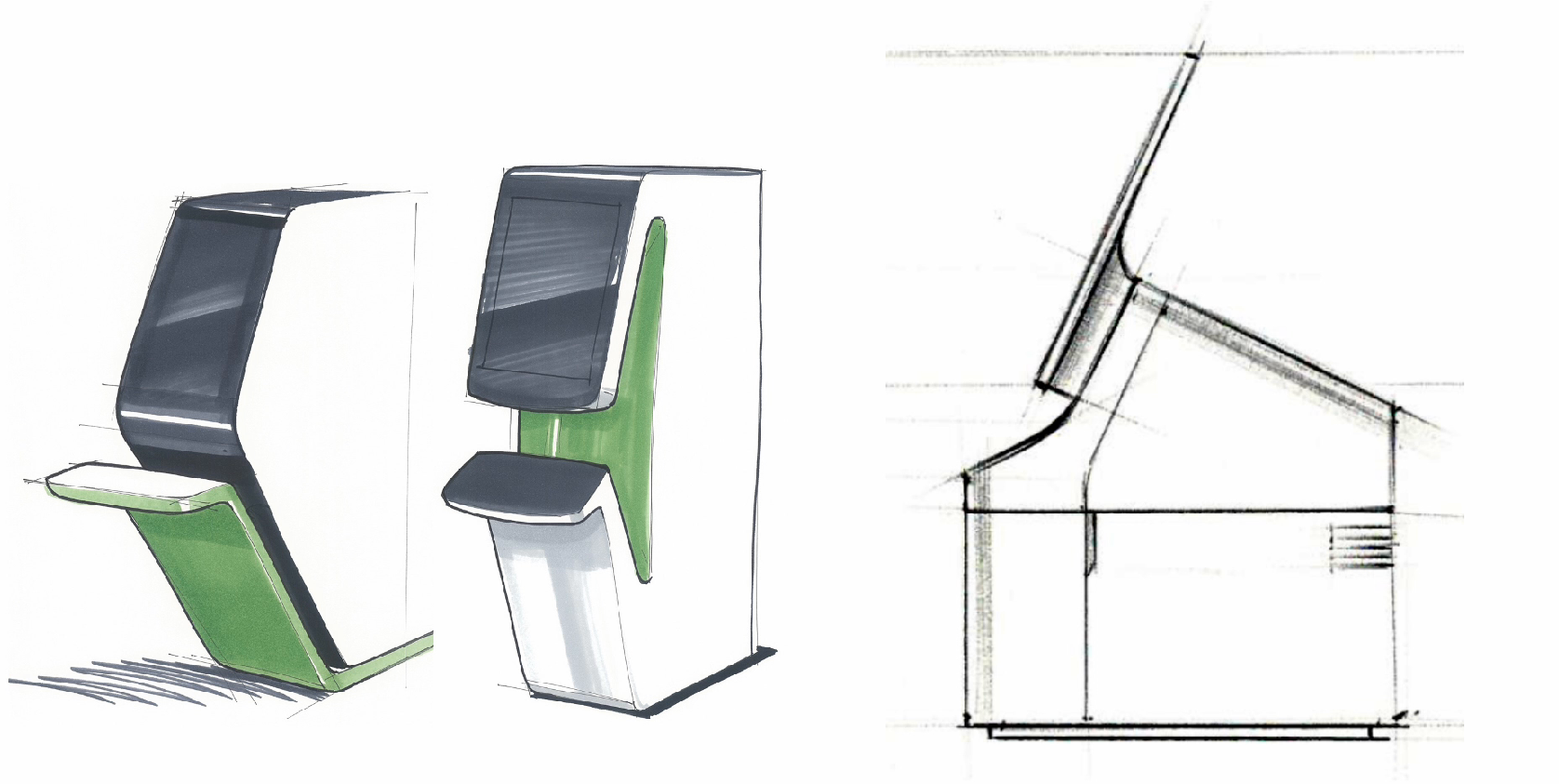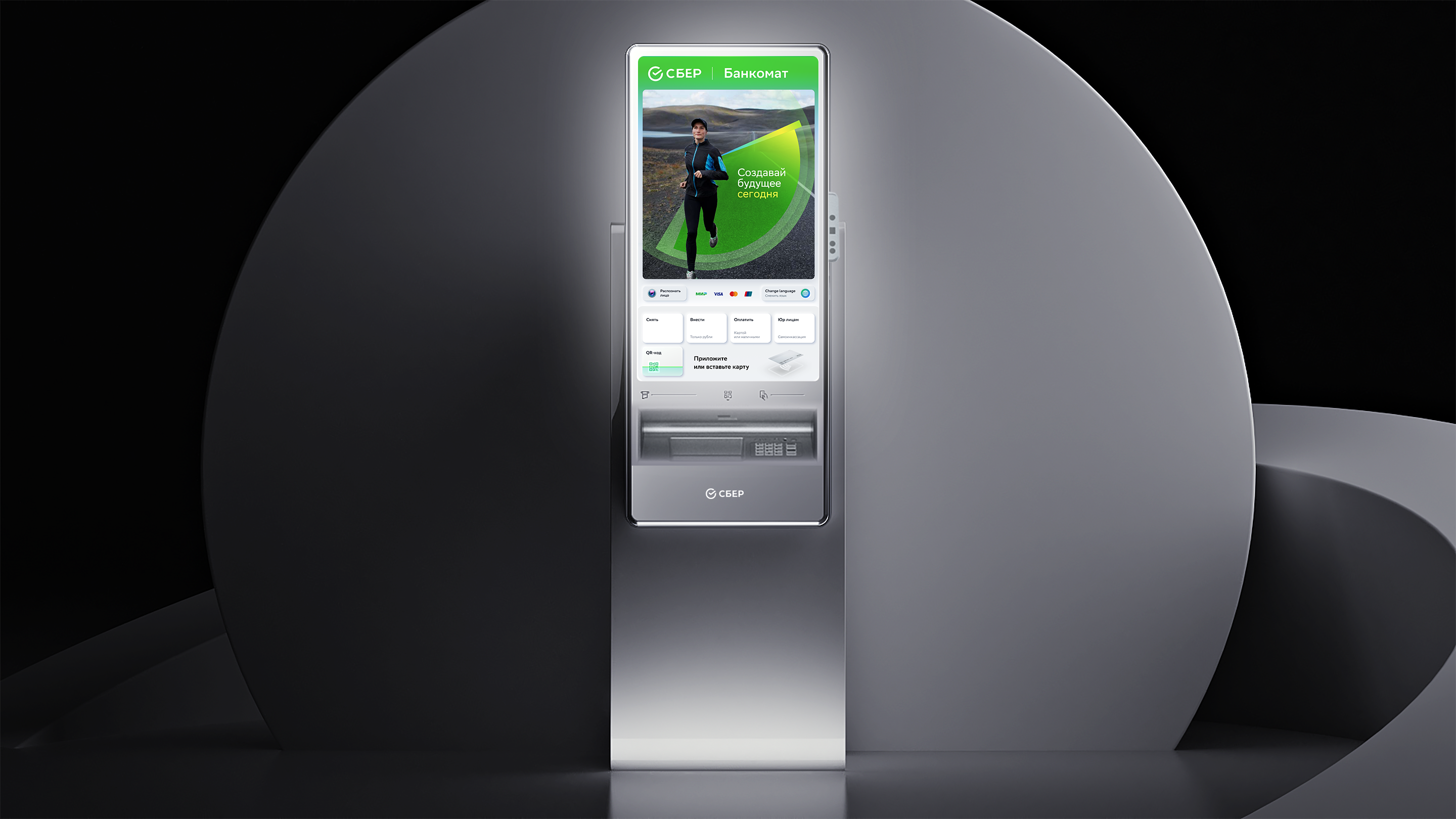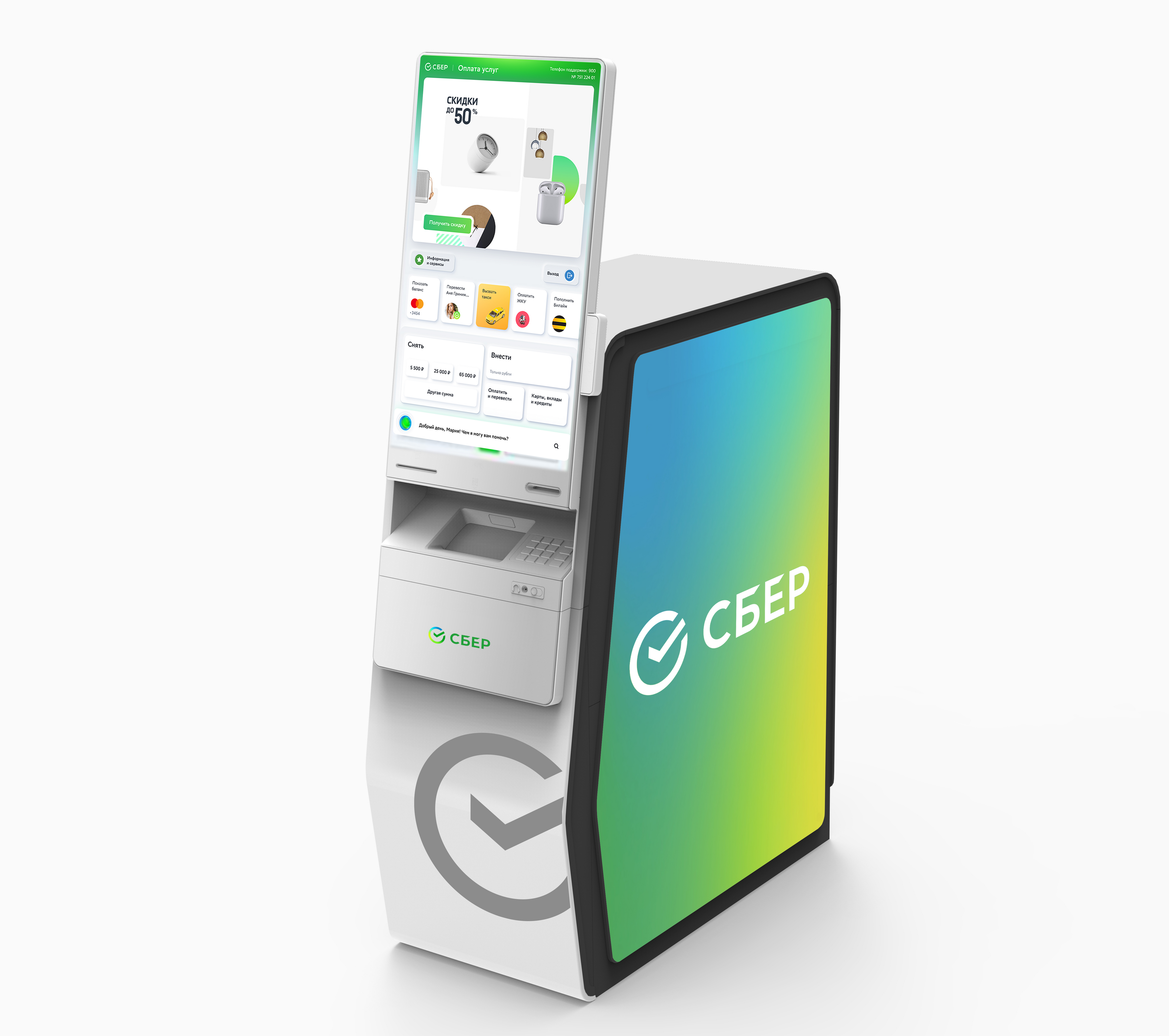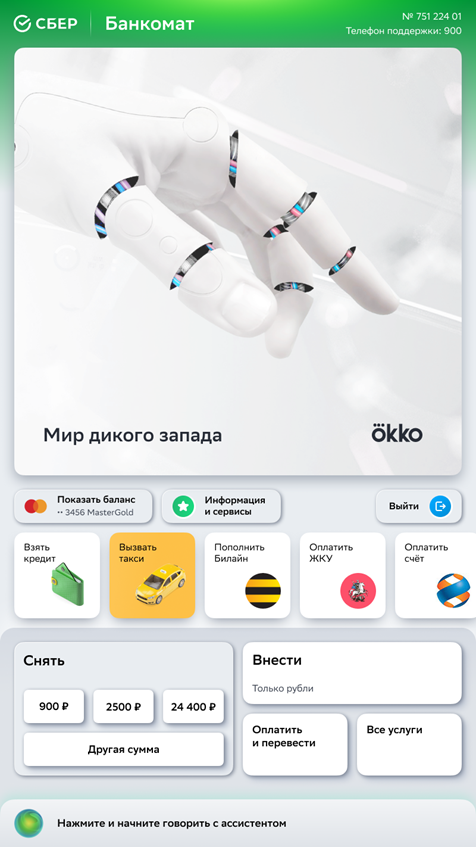
The ATM has the form specified by the manufacturer. That is, it usually looks like a large metal cabinet, because it is more convenient to arrange blocks this way. When you do not change from year to year, sooner or later the question should arise - why did it happen so historically? We have it, and finally got around to remake the ATMs themselves, and interfaces, and in general a lot.
And I am very happy to show you what exactly we did in the first step so far.
A common practice in banking is to replace it with new hardware while maintaining the ATM case. We have made new devices in this iteration, but have not yet started to put them everywhere.
The most important:
- , .
- UI: , . . , .
- , , .
- , , . .
- -, , .
One of the first important changes was that we took into account that earth users have arms and they have a certain length. Historically, past generations of ATMs have made UX the last thing to consider. Thanks to technological progress, we are no longer so limited by the layout of the blocks and have been able to change a lot.

New ATM design
The basic design requirements were as follows: tactile materials, no sharp corners, airy shapes, comfort and aesthetics. But at the same time - no damage to functionality, because we have a huge flow of customers, and even the slightest deterioration in service is unacceptable, as it will affect the entire system. And the ATM itself should not be expensive or time-consuming to manufacture, because it is a serial product (now our network is more than 70 thousand devices).
The UX of interaction with the device is easier (for now, we are talking about design, not software). Our main metaphor for templates is “like on a smartphone”. Because the new ATM uses the same user behavior steps. For example, biometric face recognition has appeared - an alternative way to log in without a card, phone or other medium. Next year, this technology will be greatly developed and we will introduce it to more devices throughout the country. The new ATM is already executing voice commands, and the interfaces and software are designed specifically for the big screen.
We have developed sketches, drawings and 3D models of the new device, created several prototypes and tested the ergonomics of the device: tilt angle, screen size, optimal brightness and contrast levels. Also during this time, we tested a lot of other hypotheses, which we tested in parallel.
Here is one of the first prototypes:

We invited ten leaders of industrial design to the competition, only two agreed to design the design in a short time: the Center for Prototyping of High Complexity “Kinetics” and Seymourpowell .
The sketches immediately showed that very tight production integration would be needed. That is, as in all modern projects, the design will largely determine the specific architecture at the level of the internal equipment. Sberbank's team decided to create a prototype on their own together with the manufacturer. The first prototype of a new ATM appeared in Korea, behind which there was non-stop work on design development, rearrangement of modules, selection of materials, textures and colors. Any change had to take into account all engineering subsystems: ventilation, power, fastening, service engineer access, and the like.

For example, there were a lot of options and alterations in the area with a keyboard, a headphone jack for the blind and visually impaired (available on our ATMs, yes), a card reader and an NFC reader. Keyboard materials: there are requirements from almost the 70s for this keyboard. It is still impossible to abandon the physical keyboard, there are many requirements for it, including from payment systems. It so happened that someone made a successful design in metal at the time of half a century ago, and since then it has been repeated almost everywhere. We experimented with the keyboard to make it tactile and warmer without compromising durability and strength. We considered different types of artificial stone (it turns out to be expensive, it pricks, and small symbols need to be applied there), so we settled on a hardened polymer with low thermal conductivity.
It was very important to place the NFC reader in the same place as the card reader, because if a person holds the card with his right hand (most of them), he will look for the reader exactly at chest level or just below the right. If you separate these two elements (which I really wanted to do in terms of layout), then it gets confused. There was a requirement that the NFC reader should not allow leaving the card: this is our long history of forming the habit of not forgetting the card at the ATM. It is now placed vertically in front.
The manufacturer wanted all rearrangements not to change the complexity of the engineering access. Unlike newer iPhones, ATMs should allow an engineer to reach almost any part so as not to touch the neighboring ones. Then there were a lot of iterations of tests with users and communication with the manufacturer, because everything had to converge perfectly.
An example of a new ATM interface:

What has changed functionally
The new ATM is faster and can accept even more bills: it accepts and dispenses up to 300 bills at a time (the previous maximum was 200 bills). This reduces the service time, including for corporate clients who carry out self-collection.
We used to slightly enlarge the screens of devices - for example, from 17 to 19 inches. In the new ATM, the screens have increased 1.7 times - up to 32 inches. The upper part is dedicated to training. We have installed motion sensors that will help you use the upper part of the screen more efficiently: the device will know when the user is looking at it in order to introduce him to Sberbank's services.
Thanks to the anti-reflective coating on the screen, people on the side and behind will not see what is displayed in the lower working area of the screen.
Together with voice commands (which allow you to withdraw or deposit money) and the ability to get a service without a card or gadget with NFC, this reduces the service time. The shortest scenario is to come up, press the biometrics service button and request the necessary service by voice, for example: “Give me a thousand rubles,” and the ATM will send the user immediately to the penultimate step of the operation to withdraw the amount the client needs.
The voice works through a browser with the sound option enabled, everything is wrapped in SSL. The voice command is transmitted over a secure channel to the service, which translates the recorded voice into a sequence of recognized words and returns this string to the ATM. The generated intent (the semantic meaning of the phrase) in the ATM calls up the associated service scenario, that is, the phrase “deposit cash”, “deposit money” will be recognized as a “cash in” command. The set of commands will expand in the future, providing the ability to use voice to fill in various fields, for example, when searching for a specific organization by its name, long details, address and everything that takes a long time to enter using the numeric keypad. Well, the development of voice input will also improve interaction with an ATM for people with disabilities.
What will happen to ATMs next
Currently, four ATMs have been installed in Moscow in Sber's new office on Tsvetnoy Boulevard and four in Sber's Agile Home on Kutuzovsky Prospekt. By the end of 2020, another 150 new ATMs will arrive in Russia. They will appear not only in offices, but also at major transport hubs and large shopping centers. At the same time, the functionality of ATMs will depend on the location, so that the devices solve the contextual tasks of the clients. It is clear that we will not replace all 70 thousand devices at once, especially since the park was updated not so long ago, but now it is very important to gain experience from these new devices.
So, if you want to look at them, come to the new office on Tsvetnoy Boulevard in Moscow, or just wait for such an ATM to appear in your city. I'll be glad to get feedback on what else can be improved, and yes, our team will really listen and improve. It will not always be fast (in particular, due to information security), but we are for all the good.
A separate topic is new interfaces. A little later, my colleagues and I will talk about these improvements separately. They, too, have long been asking.